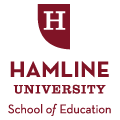Term
Spring 2019
Capstone
Thesis
Degree Name
MAT
Primary Advisor/Dissertation Chair
Deb Sheffer
Secondary Advisor/Reader One
Rebecca Bergren
Peer-Reviewer/Reader Two
Christina Strey-Wells
Abstract
During the spring of 2016, researchers for the U.S. Department of Education estimated there were 1,689,726 students ages 5–17 homeschooled nationwide, based on data gathered from the National Household Education Surveys program of 2016. Many families choose to homeschool their children in the state of Minnesota, but as far as empirical data is concerned, information on the specific homeschooling demographic in Minnesota is scant. This thesis seeks to identify the specific reasons Minnesota-based families choose to homeschool their children. Understanding the reasons for the decisions of individual families who choose to engage in homeschool, rather than enrolling their children in the public education setting, can help better inform our community, and academia, as to the depth and breadth of the many factors involved in families’ decisions in this regard. Parents of 126 homeschooled students completed an online survey regarding their primary reasons for homeschooling. The results of this Minnesota-based survey mirror some of the same percentages as those seen in the results of National Household Education Surveys program of 2016. The most cited primary reasons for homeschooling, reported by this sample population of Minnesota-based homeschooling families, were: religious/faith-based instruction; personalized instruction; concerns about negative school environment; and a desire for a non-traditional approach to education. Additional reasons included: more time together as a family; moral instruction and character values; dissatisfaction with the academic instruction at other schools; gifted and/or talented students; flexibility; physical or mental limitations of students; chronic illness/hospital visits in the family; and other special needs. When asked the main criterion each family used to evaluate homeschool curriculum/programs/resources, the most cited was that the curriculum needed to hold the child’s interest. Additional criteria included minimal lesson planning; hands-on activities; literature- based curriculums; ease of use; Biblical worldview content; and several other categories.
Research Methodology
Survey (attitude scale, opinion, questionnaire), case study, document studies, interview
Recommended Citation
Smetak, Laura R., "Reasons Families Choose To Homeschool: A Study Of Homeschooling Families In Minnesota" (2019). School of Education and Leadership Student Capstone Theses and Dissertations. 4460.
https://digitalcommons.hamline.edu/hse_all/4460
dc_type
text
dc_publisher
DigitalCommons@Hamline
dc_format
application/pdf
dc_source
School of Education Student Capstone Theses and Dissertations

